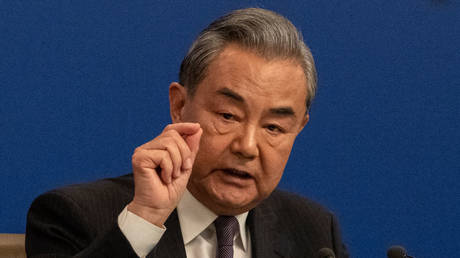How a secret cell got Hamas to release 50 hostages
The deal announced Tuesday by both sides sees Hamas release 50 hostages, including three Americans, and agree to a four- to five-day pause in fighting with Israel.


Israeli Prime Minister Benjamin Netanyahu grabbed the arm of the White House’s top Middle East official as they exited a contentious meeting in Israel on Nov. 14. Talks to secure the release of 240 hostages held by Hamas militants were stalling and tensions were high.
Brett McGurk turned around to find the Israeli leader looking straight back at him. “We need this deal,” Netanyahu said.
A week later, the Israeli leader got what he wanted.
Both the Israeli government and Hamas announced Tuesday night that they agreed to a long-anticipated deal: Hamas would release 50 women and children taken from Israel on Oct. 7.
Three Americans will be among them, including a three year old girl, Abigail, whose parents the militants killed during last month’s attack. Israel will release around 150 Palestinian prisoners, women and teenagers, as fighting in the six week war pauses for four to five days. The release of every additional 10 hostages beyond the initial 50 would lead to an extra day’s pause in fighting, Netanyahu’s office said Tuesday night.
The multi-page agreement, which will take effect 24 hours after the announcement, details the technical aspects of a treacherous pact that took five grueling weeks to complete — even though there was a deal on the table before Israel launched its military operation against Hamas. The arrangement still amounts to one thing: the biggest diplomatic breakthrough of the conflict, one that Biden administration officials hope leads to a surge in humanitarian aid for suffering Palestinians in Gaza and space to bring more hostages home.
“We are determined to get them all out. That has been a main demand of this deal,” a senior administration official told reporters Tuesday night before the announcement.
The job is not done. Around 200 hostages — men, Israel Defense Forces soldiers, dual and foreign nationals — will remain behind, though the U.S. and Israel hold out hope some of them will immediately follow the initial wave. Negotiations continue for their release, with U.S. officials noting Hamas, which is under immense military pressure, could use the break in fighting to release more people.
The war will proceed whenever the hostage transfers end. “We are at war, and we will continue the war,” Netanyahu said hours before the announcement. “We will continue until we achieve all our goals.” Those objectives, the prime minister’s office reiterated Tuesday, are to “continue the war in order to return home all of the hostages, complete the elimination of Hamas and ensure that there will be no new threat to the State of Israel from Gaza.”

Still, diplomacy that began shortly after the worst terrorist attack in Israel’s history, which saw 1,200 people killed, has led to the first sign of a light in a dark time. The Biden administration’s intention is to use the first real deescalation by Israel and Hamas as a springboard to get more hostages home.
A senior administration official told reporters in a briefing how the hostage deal crossed the finish line. A second senior administration official provided additional details of the negotiations to POLITICO. Both were granted anonymity to reveal sensitive and intense diplomatic moments.
Qatar, the close U.S. ally with influence over Hamas, approached the White House shortly after Oct. 7 with information about the hostages the militants had just taken. Israel and the world were still reeling from the deadliest day for Jews since the Holocaust, and the taking of nearly 250 people only added to the trauma. Their return would partially heal the open wound.
Qatar suggested that a small cell be formed between the U.S. and Israel to work the hostage issue. National security adviser Jake Sullivan turned to two of his top lieutenants, McGurk and Josh Geltzer, a deputy assistant to the president in the National Security Council. Together, they worked their contacts and the phones to coordinate on how best to strike a deal with Hamas.
The stakes were made clear during an Oct. 13 Zoom call between President Joe Biden and the families of unaccounted for Americans and hostages. The conversation went longer than the schedule allowed, as Biden let everyone on the line tell stories about their loved ones and express their fears. “It was one of the most gut-wrenching things I've ever experienced in that office,” said the first senior administration official.
The hostage issue became a central component of Biden’s multiple phone calls and face-to-face meetings with Netanyahu, along with pressing Israel to allow humanitarian aid to reach those in need and to ensure military operations to root out Hamas in Gaza prioritized civilian safety.
Those efforts got their first win on Oct. 23. Two American citizens, Natalie and Judith Raanan, a mother and daughter, were let go by Hamas. It proved the concept that the cell’s work could eventually secure the release of even more hostages.
A day later, Hamas sent word through its channels to the cell: a number of women and children held captive could leave Gaza. The catch, though, was their safe transit out could only be secured if Israel didn’t launch its ground invasion of the enclave.
“U.S. officials asked the Israelis hard questions about whether or not the ground offensive should be delayed to give the deal a chance,” said the second senior administration official. “The Israelis determined that terms were not firm enough to delay the ground invasion. There still was no proof of life of any hostages from the Hamas side.” Neither the U.S. nor Israel agreed a deal should be struck without a guarantee that the militants would let people go.
Israeli troops invaded Gaza near the end of October. But, the official said, the “invasion plan was adapted to be phased and designed to support a pause if a deal came together.”
A flurry of diplomacy proceeded behind closed doors. The contours of a deal were coming together. Hamas provided information on 50 of its hostages, signaling to Biden that it was possible to get them out. The U.S. president related his views to Netanyahu on a Nov. 14 call, and the Israeli leader agreed.
It was later that day that Netanyahu chased down McGurk, telling him how important it was for Israel to get the deal done. While the Israeli people were behind the war, they still faulted Netanyahu for failing to secure the nation from Hamas and for failing to bring Israeli hostages home. An agreement wasn’t just the moral thing to do. It was a political necessity.
Complications remained. Israel cut off communications inside Gaza during its military operations, making it hard to relay any information to and from Hamas. The militants also threatened to end negotiations entirely after the IDF entered al-Shifa hospital in northern Gaza, which Israeli and the U.S. officials claim Hamas uses as a command center to attack Israel. Talks only resumed once Israel, through the cell channel, got word to Hamas that the IDF would keep the hospital running.
Biden felt that time to make something happen was running out. On Nov. 17, he called the Emir of Qatar, noting McGurk would be in his country the next day. They could go over the final text of the forming agreement. Just before the top Middle East aide arrived, Qatar received some comments on the proposed deal from Hamas. Both men dialed in CIA Director Bill Burns, who had been doing his own regional diplomacy and was the main conduit with Mossad, Israel’s intelligence agency.

The deal, the second administration official said, was “structured for women and children in the first phase, but with an expectation for future releases and the aim to bring all hostages home to their families.”
The next morning, McGurk was in Cairo meeting with Abbas Kamel, Egypt’s intelligence chief. As they talked, an Egyptian aide walked in with a message: Hamas leaders in Gaza accepted almost all of what had been worked out in Doha the night before.
McGurk flew back to Israel on Nov. 19 to speak to the war cabinet, relaying the deal on hand and Hamas’ reaction to it. That evening, senior Israeli officials let the U.S. know that they agreed to the pact with only some minor changes.
Qatar sent that version to Hamas. “It’s the final offer,” Qatar’s leader emphasized to their Hamas counterparts, per the two U.S. officials.
There was some minor back and forth over the next 48 hours, but it became clear that all parties would accept the agreement. On Nov. 21, Hamas gave the green light. All that remained was Israel’s full cabinet to approve the deal, which everyone in the cell expected would happen.
Word of their sign off came later on Nov. 21 in Washington. It was over. It was an “excruciating five-week process,” said the first senior administration official.
Even after all the work to strike the hostage deal, those involved in the process still think of the human toll. The official, thinking of Abigail, said “I can't even imagine the state of a three year old girl in this situation.”












